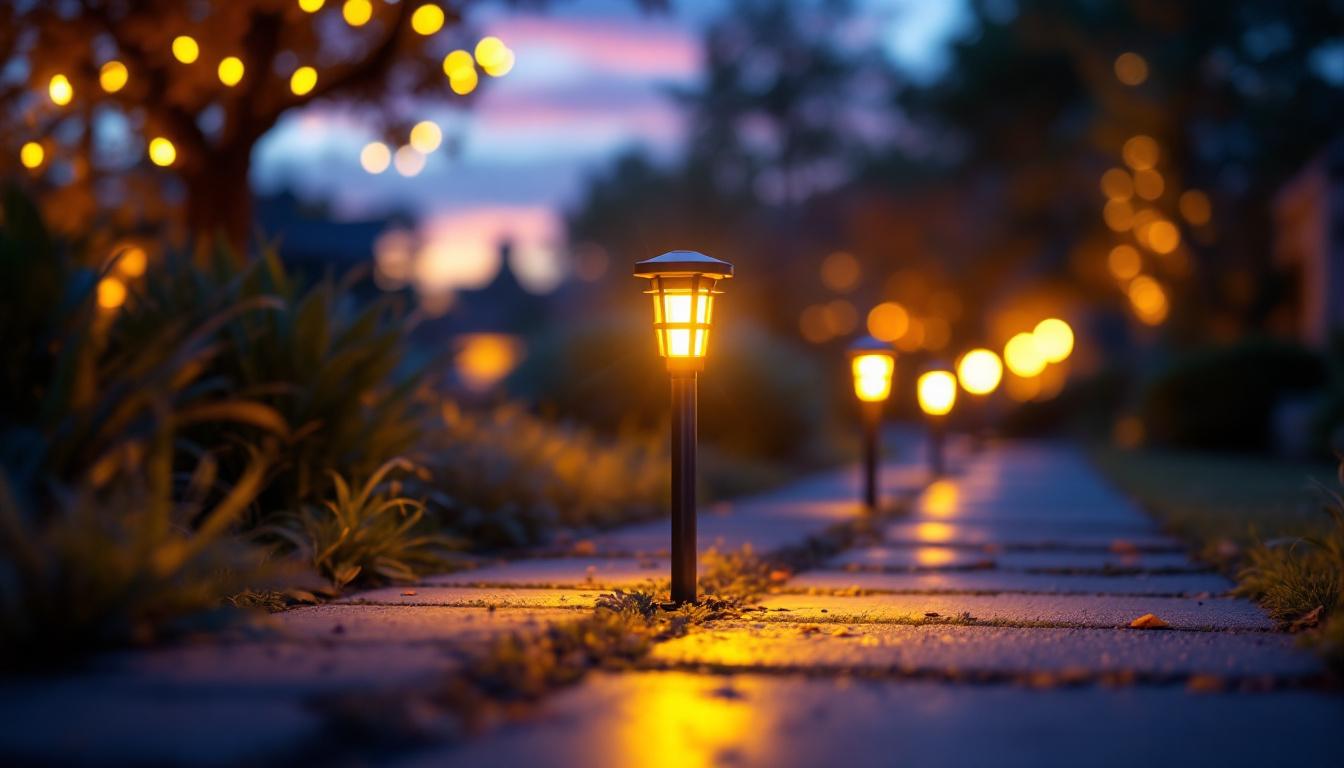
In the realm of lighting installations, LED dock lighting has emerged as a vital component for enhancing safety and functionality in marine environments. As a lighting contractor, understanding the nuances of LED dock lighting is essential for delivering high-quality installations that meet the specific needs of your clients. This comprehensive checklist will guide you through the critical aspects of LED dock lighting, ensuring that every project is executed with precision and excellence.
LED dock lighting is designed to illuminate docks, piers, and marinas, providing visibility for boaters and enhancing the aesthetic appeal of waterfront properties. The advantages of using LED technology are numerous, including energy efficiency, longevity, and reduced maintenance costs. However, before diving into the installation process, it is crucial to grasp the fundamental characteristics of LED dock lighting.
One of the primary benefits of LED dock lighting is its energy efficiency. Compared to traditional lighting solutions, LEDs consume significantly less power, which translates to lower electricity bills for clients. Additionally, LEDs have a longer lifespan, often lasting up to 25,000 hours or more, which means fewer replacements and less waste.
Furthermore, LED lights emit less heat, making them safer for use in environments where flammable materials may be present. The durability of LED fixtures also makes them ideal for outdoor use, as they are often resistant to moisture, corrosion, and impact. This resilience ensures that the lights can withstand harsh weather conditions, from heavy rain to extreme temperatures, making them a reliable choice for any waterfront setting.
When selecting LED dock lights, contractors should consider various types available in the market. Common options include surface-mounted lights, underwater lights, and bollard lights. Each type serves a unique purpose and can be used in combination to create a comprehensive lighting solution.
Surface-mounted lights are typically installed on the dock’s surface, providing direct illumination for walkways and working areas. Underwater lights, on the other hand, enhance the visual appeal of the water while improving safety for boaters navigating at night. Bollard lights are often used to delineate pathways and provide ambient lighting, adding a decorative touch to the dock. Additionally, some advanced models come equipped with smart technology, allowing for remote control and programmable settings, which can further enhance the user experience by adapting the lighting to specific needs or events.
Moreover, the color temperature of LED dock lights can vary, offering options from warm white to cool daylight tones. This flexibility allows property owners to create the desired atmosphere, whether it’s a cozy, inviting space for evening gatherings or a bright, functional area for nighttime navigation. The choice of color temperature can significantly influence the overall ambiance of the dock area, making it essential for property owners to consider their specific aesthetic goals when selecting lighting solutions.
Successful installation of LED dock lighting begins with meticulous planning. This phase is crucial for ensuring that the lighting meets the specific needs of the dock while adhering to local regulations and safety standards.
Before proceeding with the installation, it is essential to assess the dock environment thoroughly. Consider factors such as the size and layout of the dock, the types of vessels that will be using it, and any potential obstacles that may obstruct light distribution. Additionally, take note of the surrounding landscape, as natural features can influence lighting placement and intensity.
Understanding the dock’s primary functions—whether for recreational boating, fishing, or commercial use—will help determine the appropriate lighting design. For instance, a busy marina may require brighter, more focused lighting, while a private dock may benefit from softer, ambient lighting. Furthermore, consider the time of year and local weather patterns, as these can affect visibility and the overall lighting needs. In regions with heavy fog or rain, for example, brighter lights with a wider beam may be necessary to ensure safe navigation.
Every lighting installation must comply with local regulations and safety codes. Familiarize yourself with the relevant guidelines governing dock lighting in your area, including restrictions on light pollution, height limitations, and electrical safety standards. Failure to adhere to these regulations can result in fines or the need for costly modifications.
Consulting with local authorities or a licensed electrician can provide valuable insights into the specific requirements for your project. Ensuring compliance not only protects your business but also enhances the safety and satisfaction of your clients. Additionally, consider the environmental impact of your lighting choices; opting for energy-efficient LED fixtures can reduce energy consumption and minimize light pollution, contributing to the preservation of local wildlife habitats. Engaging with community stakeholders can also foster goodwill and support for your project, as they may have valuable input regarding the aesthetic and functional aspects of the lighting design.
The selection of appropriate LED fixtures is a critical step in the installation process. The right fixtures will not only enhance the functionality of the dock but also contribute to its overall aesthetic appeal.
When choosing LED fixtures, consider the light output measured in lumens. The required lumens will vary based on the intended use of the dock. For example, areas requiring high visibility, such as boat ramps, may need fixtures with a higher lumen output, while ambient lighting for seating areas may require less intensity.
Color temperature is another important factor. Measured in Kelvin (K), the color temperature of the light can significantly impact the atmosphere of the dock. Warmer temperatures (around 2700K to 3000K) create a cozy and inviting ambiance, while cooler temperatures (5000K and above) provide a more clinical and bright environment, suitable for task-oriented areas.
Given the outdoor nature of dock lighting, selecting fixtures that are durable and weather-resistant is paramount. Look for products with high IP ratings, indicating their ability to withstand moisture and dust. Additionally, materials such as marine-grade aluminum or stainless steel can offer enhanced corrosion resistance, ensuring longevity in harsh marine environments.
It is also advisable to choose fixtures with impact-resistant lenses to protect against accidental damage from boats or equipment. Investing in quality fixtures will reduce maintenance costs and enhance the overall safety of the dock.
The installation process for LED dock lighting requires careful attention to detail to ensure optimal performance and safety. Following a systematic approach can help streamline the process and minimize potential issues.
Before installation begins, clear the site of any debris or obstacles that may hinder the process. Mark the locations for each fixture based on the lighting design plan, ensuring that they are evenly spaced and adequately positioned to provide comprehensive coverage.
It is also essential to ensure that the electrical supply to the dock is adequate for the new lighting system. Conduct a thorough inspection of existing wiring and make any necessary upgrades or repairs before proceeding with the installation.
When wiring the LED fixtures, adhere to all local electrical codes and safety standards. Use marine-grade wiring and connectors to prevent corrosion and ensure longevity. It is advisable to install a dedicated circuit for the dock lighting to prevent overloading existing circuits.
Make sure to secure all connections properly and use waterproof junction boxes to protect against moisture. Testing the system before finalizing the installation can help identify any issues that need to be addressed.
Once the installation is complete, several post-installation considerations should be addressed to ensure the long-term success of the LED dock lighting system.
After installation, conduct a thorough testing of the lighting system. Check each fixture to ensure it is functioning correctly and providing the desired level of illumination. Adjust the angle and positioning of fixtures as needed to eliminate dark spots or glare.
It may also be beneficial to conduct a night-time walkthrough to assess the overall effectiveness of the lighting. This allows for any necessary adjustments to be made before the project is finalized.
Educating clients about the operation and maintenance of their new LED dock lighting system is crucial for ensuring its longevity. Provide them with information on how to operate any timers or sensors and the importance of regular maintenance checks.
Encourage clients to periodically inspect the fixtures for any signs of wear or damage and to clean lenses to maintain optimal light output. Offering a maintenance plan can also enhance client satisfaction and provide a recurring revenue stream for your business.
LED dock lighting represents a significant advancement in marine lighting solutions, offering contractors the opportunity to deliver high-quality, energy-efficient installations. By following this comprehensive checklist, lighting contractors can ensure that every aspect of the installation process is meticulously planned and executed.
From understanding the benefits of LED technology to selecting the right fixtures and ensuring compliance with local regulations, each step is vital for creating a safe and functional lighting environment. Ultimately, the goal is to enhance the safety and enjoyment of dock users while providing clients with a reliable and aesthetically pleasing solution.
As the demand for LED dock lighting continues to grow, staying informed about the latest trends and technologies will position contractors for success in this evolving market. Embracing innovation and prioritizing quality will not only satisfy clients but also elevate the standard of lighting installations in the marine industry.
Ready to elevate your LED dock lighting installations with the finest products on the market? Look no further than LumenWholesale, where we specialize in providing contractors with superior, spec-grade lighting solutions at unbeatable wholesale prices. Say goodbye to local distributor markups and hello to our extensive selection that meets rigorous industry standards. With LumenWholesale, you can count on reliable, high-performance lighting that enhances every marine environment. Plus, enjoy the convenience of bulk buying with free shipping, ensuring you get the best value without any hidden fees. Make your next project shine and experience wholesale lighting at the best value today!

Discover essential tips and common pitfalls for lighting contractors working with Eti Solid State Lighting Inc.

Discover the future of eco-friendly illumination with our comprehensive guide on solar power light strips.

Discover essential insights for lighting contractors in this comprehensive guide to ceiling light fixtures.

Discover essential insights and expert tips for lighting contractors in this comprehensive guide on light fixtures.